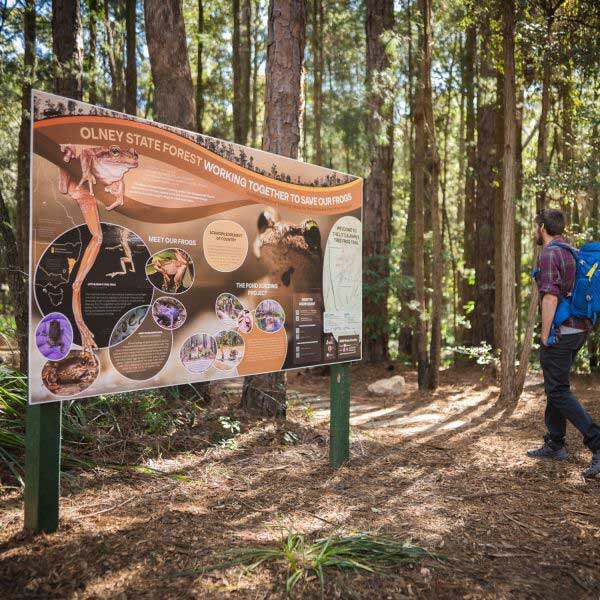Olney State Forest is now home to a series of frog ‘hotels’ designed to support threatened frog species, thanks to a partnership between Forestry Corporation of NSW and the University of Newcastle.


The new artificial ponds form a network of breeding habitat for iconic species such as the Littlejohn’s tree frog and the giant burrowing frog, said Forestry Corporation Senior Ecologist Chris Slade.
“The habitat ponds have been strategically placed to give more breeding opportunities for threatened frog species, which in turn will help increase their population and persistence in the environment,” Mr Slade said.
“We’re excited to be collaborating with the University of Newcastle and other project partners to develop this infrastructure and monitor the population response over coming years.
“Projects like this take effort from a lot of people from idea to implementation, and this result is a credit to the community, the University of Newcastle, our staff and many others involved.”
Lead researcher, Dr Alex Callen from the University of Newcastle said the habitats also serve to provide climatic refuge for many other forest fauna in the face of shifting climates.
“The race is on to increase the population size of two threatened frog species which were affected by the 2019 Black Summer fires to future-proof them from the incoming El Nino climate shift, which can bring extended periods of hot, dry weather,” Dr Callen said.
“The global amphibian pandemic which has decimated frog populations for more than three decades is the primary driver of more than 200 amphibian extinctions globally, with another 2400 on the same trajectory. This can reduce populations to such small sizes they then risk local extinction from additional threats such as shifting climates, predation by invasive species, water pollution and habitat destruction.
“Because disease has reduced the population of some frogs to very low levels, they are more susceptible to local extinction from stochastic events like drought and wildfire. Creating breeding habitat can increase population size to buffer threatened species from these events,” Dr Callen said.
Visitors to Olney State Forest can experience the ponds, hear frog calls, and even identify individual species thanks to the new Littlejohn’s walking trail. Along the trail, people can also see remnants of historical forestry days and an array of beautiful flora and fauna.
The project was supported through the revegetation efforts of volunteers from the Awaba Mountain Bike Club, the Friends of Strickland group and NSW & ACT 4WD association. The project follows extensive consultation with University of Newcastle, the Central Coast Mountain Bike Club and other forest users.
The new frog habitat and walking trails are also a reminder many threatened species need our support to recover and thrive,” said Forestry Corporation’s Community Partnerships Leader, Jess Brine.
“The way we use the forest is vital to the longevity of these species,” Ms Brine said.
“Visitors play an important role in the environmental sustainability of our forests through responsible behaviour, whilst still enjoying memorable nature-based experiences. When visiting a State forest, we ask visitors to please stay on formed trails, take only photographs and leave only footprints behind.”
Forestry Corporation has also worked with the Natural Resources Commission and Australian Museum to establish a citizen science monitoring portal for the community to learn more about frog species.
The portal and Frog Id App are linked from the Forestry Corporation website and can be used to record the calls of frog species, enabling the university and Australian Museum to continue their important research.
The citizen science program has other sites at Swan’s Crossing in Kerewong State Forest and Wild Bull picnic area in Mount Boss State Forest.








































